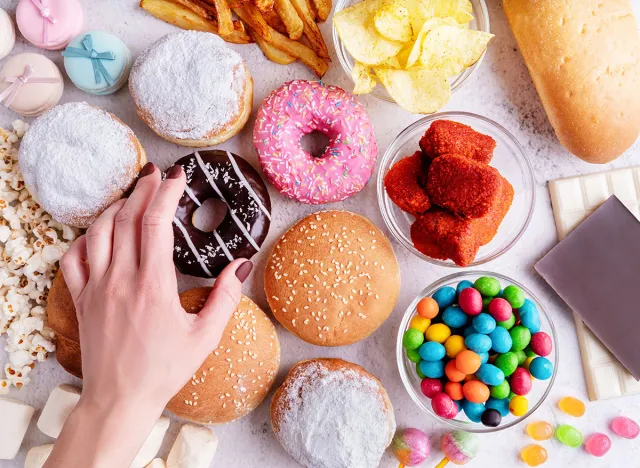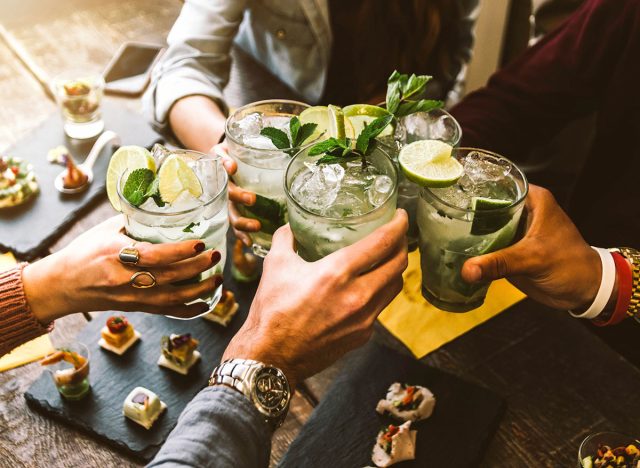#1 Surprising Mistake That's Sabotaging Your Weight Loss
Celebrity trainer and weight loss coach Paulina Stein is getting real about a common weight loss faux pas – and it's very likely you are committing it. In a new Instagram video, the celebrity trainer and weight loss coach issued a warning about something you might be doing that was preventing you from achieving your weight loss goals. "Here's a friendly PSA (especially those who say you barely drink), If you are drinking every night or even a few times per week, you're slowing your weight loss, fat burn, and actually INCREASING your appetite and depleting nutrients," she says.
One Drink Can Lead to an Additional 1,200 Calories

In the video, she demonstrates how a single glass of wine can lead to a 1,200-calorie session. "Pay attention to your drinking if you want to lose weight," she says.
- Glass 1: 150 calories
- Glass 2: 150 calories
- Glass 3: 150 calories
- Glass 4 + cookies: 750 calories
You Are Likely to Eat Junk Food When Drinking

"1200 calories later 😅 what's your drinking food of choice?! Does Anyone else reach for the cookies, Taco Bell, or cheeseboards when drinking? Lol," she says in the caption. ALCOHOL INCREASES YOUR APPETITE AND can slow down metabolic pathways. Aka: Why is your weight higher after a night of drinking?" she continues.
Solution: Stick to Skinny Drinks Once a Week

Her solution? "Stick to skinny drinks 1x per week or opt for delicious mock-tails!" she recommends. Paulina isn't wrong. Studies have found that drinking alcohol makes you more likely to not only crave snacks but indulge in them.
Alcohol Can "Disrupt Appetite Signals"

"While alcohol may not increase food consumption per se, alcohol may acutely disrupt appetite signals, perhaps via processes of reward and inhibitory control, resulting in overall greater calorie intake," a 2015 study found. "Individuals who are generally disinhibited may be more vulnerable to the effects of alcohol and drinking environments on eating behavior."
RELATED: 5 Things You're Doing That May Cause Sagging Skin on Your Arms
It Can Also "Temporarily Increase Serotonin Levels"

"Alcohol can temporarily increase serotonin levels, which can affect hunger levels and food cravings," explains Johns Hopkins University. "Serotonin is a neurotransmitter that plays a role in appetite control, as well as sleep and mood."
"Additionally, alcohol lowers inhibitions, which makes it more likely that you may choose foods or portions that are significantly different from what you may choose to consume when not drinking," they add.
💪🔥Body Booster: Pay extra attention to your caloric intake during your next drinking session. Are you craving more snacks than usual?





